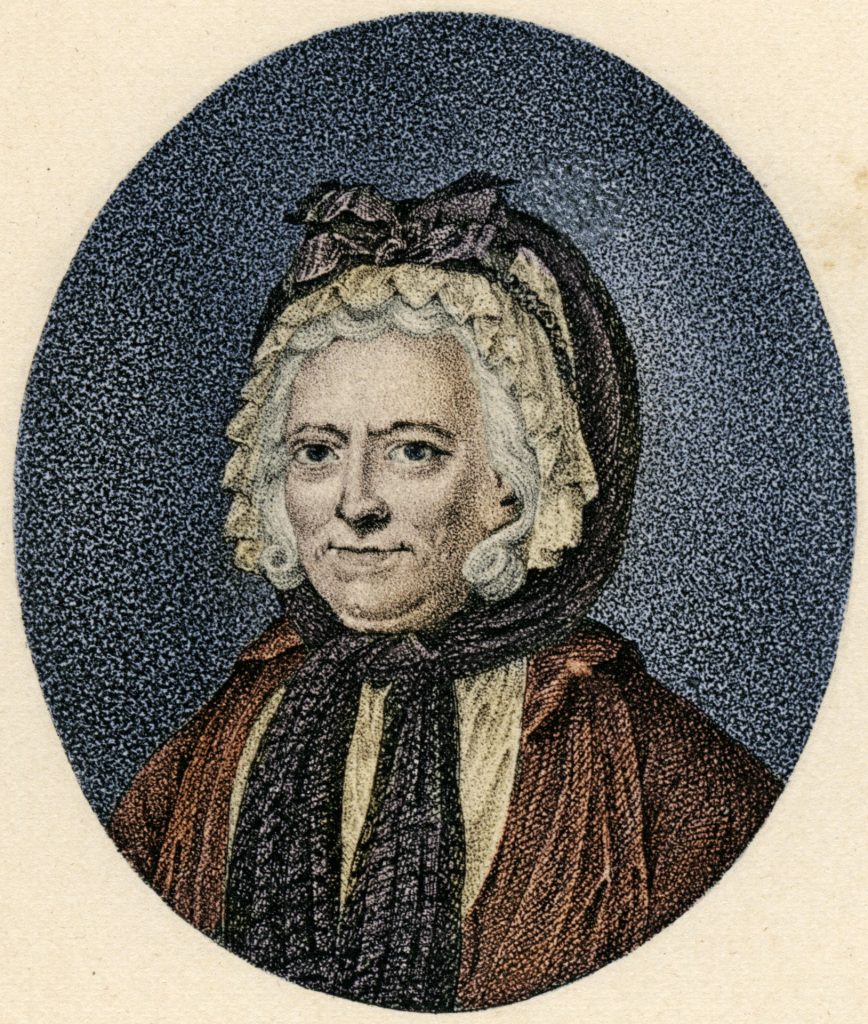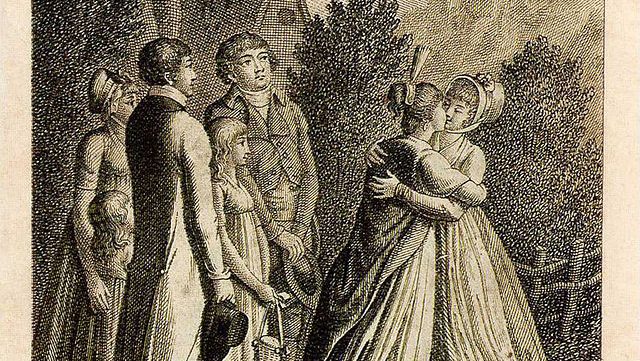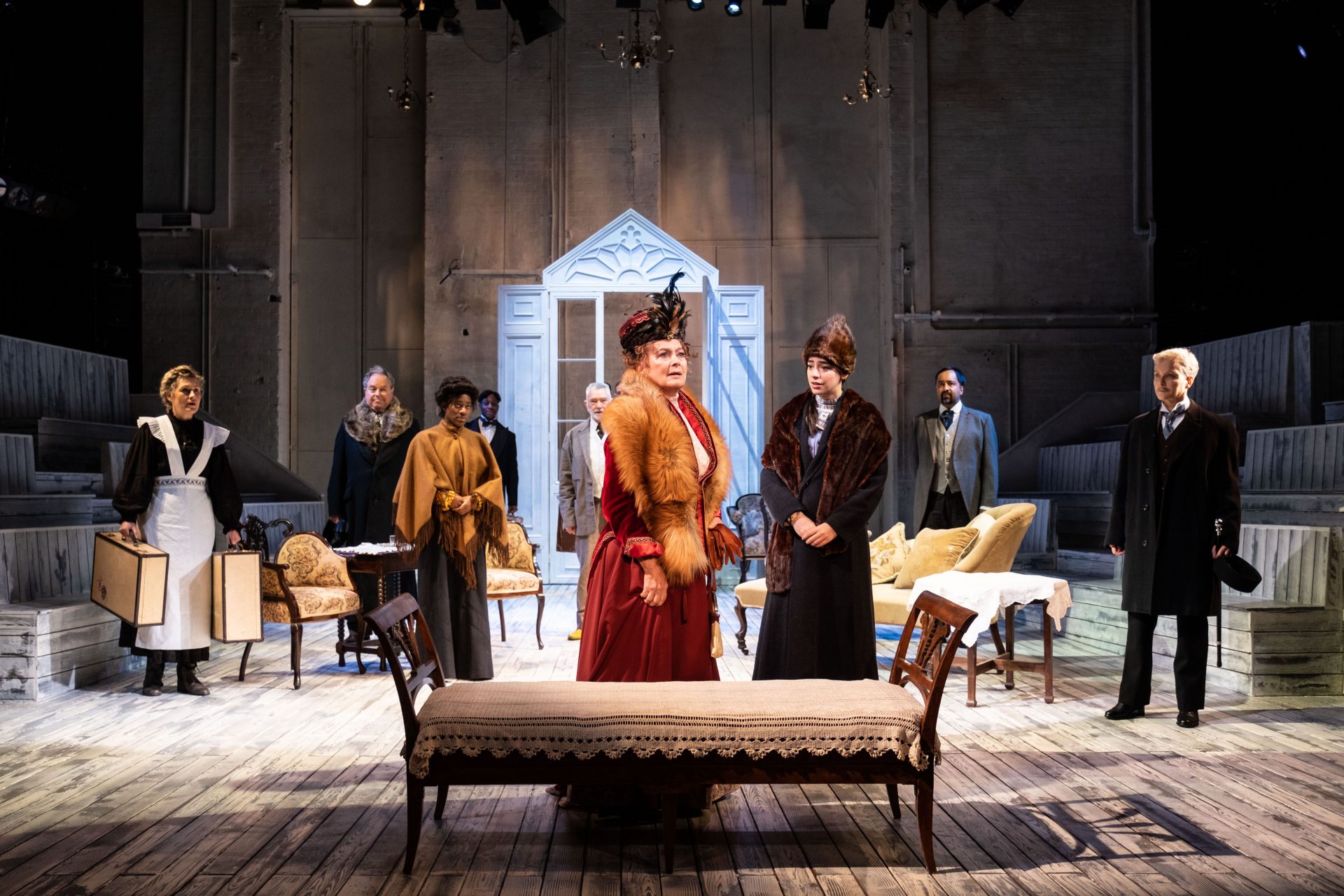It’s an anniversary that will pass largely without comment but this month marks the 250th anniversary of the publication of the first German novel by a woman and arguably the first great European novel written by a woman. Geschichte des Fräuleins von Sternheim, ‘The Story of Miss Sternheim’, published in October 1771, is little read today but represents an important milestone in European literature, not to mention the wider world of feminist writing.
For one thing, the book’s author more than deserves celebration. Sophie von La Roche was the first European woman to make an independent living as a writer, was a bestselling novelist and travel writer, launched the first periodical aimed at the improvement and education of young women and travelled widely and independently in Europe at a time when her female peers were expected to stay at home attending to their domestic responsibilities. She also ran one of the European Enlightenment’s most important literary salons – Goethe was a regular – and still found the time to bear eight children. She was, by anyone’s standards, an extraordinary woman.
Sternheim, her debut novel, is clearly influenced by Samuel Richardson’s Clarissa and Pamela, right down to its English setting. The heroine, also named Sophie, travels to England in her teens and is introduced into upper class society where she struggles to maintain her virtuous nature and admirable morals in the light of attentions, genuine and nefarious, paid by members of the English aristocracy. It’s a sprawling novel, one that travels from Germany to Scotland and features kidnapping, a fake wedding, some time spent among the peasantry in a rural village and the heroine being locked for a time in a tower, Gothic style.
It’s possible to detect a kind of proto-feminism in Sternheim as well as hints of the Romanticism that lay just over the horizon and the impending rise of Sturm und Drang: Goethe’s The Sorrows of Young Werther, published three years later, boasts clear influences from Sternheim. It’s a wise novel, one that demonstrates through its epistolary structure an ability to see the world through several different pairs of eyes and points of view. Goethe was such a fan that he reviewed the work in glowing terms in a Frankfurt newspaper “not as a book, but as a human soul”.
While infused with a prototype Romantic melancholy, the book stops short of outright Romanticism – passion and self-interest exist here but alongside morality and virtue rather than eclipsing them, with the latter traits emerging triumphant – but its influence can be discerned in much of the European literature that followed.

La Roche was born Sophie Gutermann in Bavaria in 1730, the daughter of a physician, and grew up in Augsburg. A bright child, she could read at three and had read the Bible from cover to cover by the age of five.
La Roche was fortunate in that the three most significant men in her life recognised and encouraged her intelligence and creativity. At 17 she became engaged to the first, Giovanni Bianconi, 14 years her senior and personal physician to a local prince.
Bianconi tutored Sophie in mathematics, Italian and music and encouraged her love of reading, introducing her to some of the classics of Italian literature. When Sophie’s mother died shortly after the engagement was announced, however, her father, appalled by Bianconi’s insistence their children would be raised as Catholics, called off the union.
In 1750, 20-year-old Sophie was introduced to the poet Christoph Martin Wieland, a key figure of the European Enlightenment, an architect of Weimar classicism, author of the first Bildungsroman, Geschichte des Agathon, and a distant cousin. For the first 18 months their relationship was conducted purely by correspondence in which the pair discussed philosophy and literature and in which Sophie encouraged the law student, two years her junior, to write the poetry that would go on to make his name.
He in turn encouraged her to write. Wieland, convinced he had found his muse, proposed marriage and, despite the couple never having met in person, Sophie accepted. When they did finally meet, after nearly two years, it was a brief encounter just long enough for Sophie to wave Wieland off to his literary studies in Zurich.
With Wieland away, Sophie clashed with her future mother-in-law, who didn’t approve of Sophie’s lifestyle. She went hunting and dancing and would attend the theatre, demonstrating in Wieland’s mother’s eyes a flightiness wholly inappropriate for a woman engaged to an absent fiancé. Sophie would, she said of her son’s intended, “no matter how high his income, waste more than he would earn”.
The strain of absence and the persistent disapproval of her future mother-in-law, not to mention her father’s regular barbs about Wieland’s future prospects, led to the engagement being broken off. La Roche and Wieland, quite probably the loves of each other’s lives, stayed close friends for the rest of their lives and Wieland would remain the biggest and most important influence on La Roche’s career.
Instead, Sophie married Georg von La Roche, the illegitimate son of a German count and a dancer, who was also keen for Sophie to explore her creativity and established a close friendship with Wieland. Sophie spent most of the 1760s as a member of her father-in-law’s court at his castle Warthausen where her proficiency in French, the official language of the court, made her invaluable in writing his letters. She soon became a favourite, accompanying the Count on visits to his country estate at Bönnigheim – where she wrote most of Sternheim – and earning herself unrestricted access to the Warthausen library.
In 1771 Georg La Roche was appointed privy councillor to the Archbishop of Trier, a post that saw the family move to Koblenz. It was there Sophie set up her literary salon patronised by the region’s leading literary and philosophical lights, including Goethe. The same year saw the publication of Sternheim, edited, published and with an introduction by Wieland. As it was unthinkable at the time for a woman to publish a novel it appeared without a named author. Many assumed Wieland himself had written it, but he was careful to specify in his introduction that this was a women’s novel – the first time a work of fiction was marketed for a specifically female readership.
When the book was widely praised and became an instant bestseller, running to three editions in 1771 alone, Wieland could reveal La Roche as its author. Having ensured that his introduction emphasised the moral virtue of the novel’s heroine, a theme also cited prominently in reviews, it was safe for La Roche to be credited without questions being asked of her character.
Despite her fame and success, the mores of the age dictated that Sophie still relied on Georg financially. So when he died in 1788 and Sophie subsequently lost her widow’s pension as an indirect result of the French Revolution, she commenced earning a living in the only way she knew – with her pen. She earned a steady income but as European arts moved towards Romanticism her fictional world of independent yet morally virtuous women chimed less resonantly with younger readers newly captivated by the self-destructive passions of the likes of Goethe’s Werther.
La Roche retained a large and loyal readership but never again reached the heights of her debut. As a pioneering independent traveller she wrote a number of well-received travelogues, including one of the most detailed accounts by a visitor to London of the Georgian era, and launched in 1783 Pomona für Teutschlands Töchter, ‘Pomona for the Daughters of Germany’, a pedagogical journal that beat the drum for the education of young women in the arts and sciences on top of their domestic responsibilities (Pomona impressed the Russian Empress Catherine the Great enough to order 500 copies).
While she can’t be described as a feminist in the modern sense, von La Roche was certainly a trailblazing progressive for her time. Indeed, in Offenbach-am-Main, the town in which she spent her final years until her death aged 76 in 1807, there is a biennial Sophie von La Roche Prize for Equal Rights for Women.
She remains little known outside Germany. The last English translation of Sternheim was published more than 20 years ago and is now hard – and expensive – to find. It’s a shame that the 250th anniversary hasn’t prompted a new edition but immersed as we are in a golden age of literary translation, who knows, maybe there’s still hope that this exceptional woman might yet find a new audience.
A European Library
A weekly selection of fiction and non-fiction, new and old, to build a comprehensive literary portrait of our continent.
EUROPE SINCE NAPOLEON by David Thomson (Penguin, 18.99)
First published in 1957 and updated and never out of print since, this remains an astonishingly comprehensive yet page-turningly readable work of historical writing. Beginning with the French Revolution, Thomson charts the major historical events and narratives that shaped the continent we know today. Erudite and witty, he combines intellectual authority with brilliant, accessible writing to produce one of the most important European history books of our times. “History,” he writes, “offers no warrant for either complacency or black despondency. It offers no simple answer, only a challenge to reasonable hope and strenuous, unremitting endeavour.”




